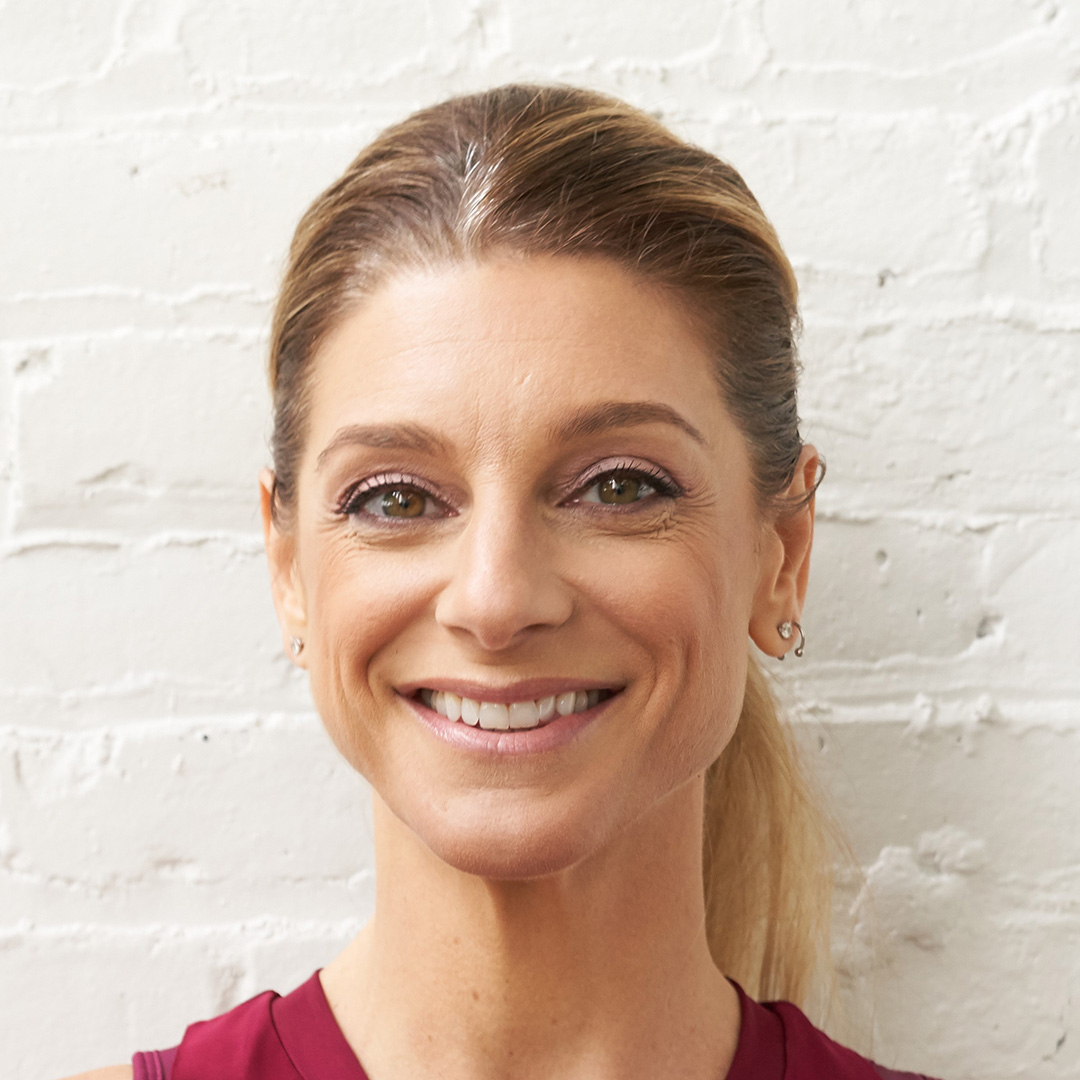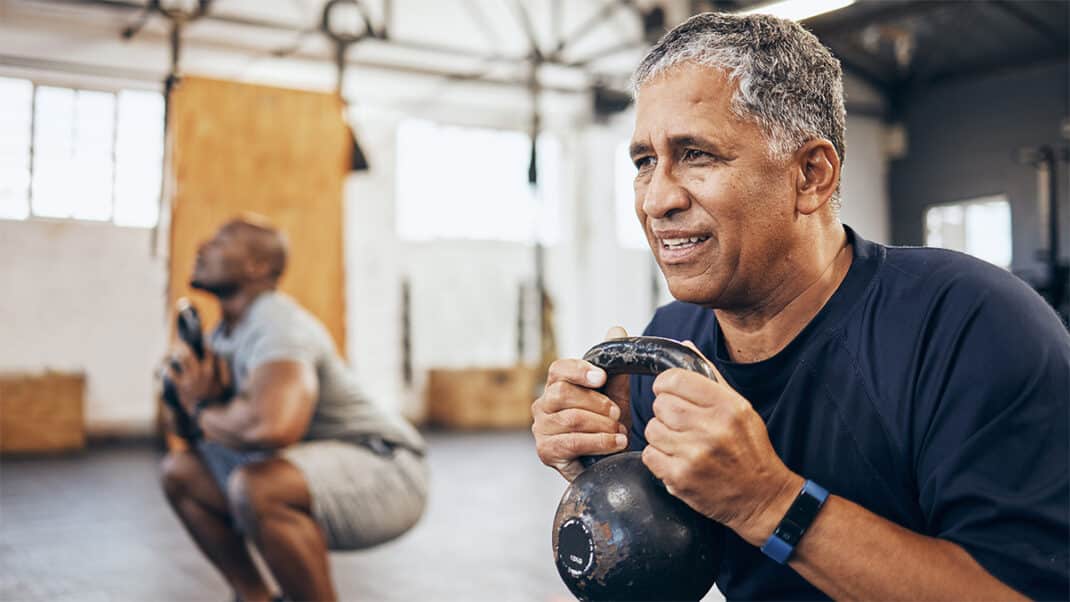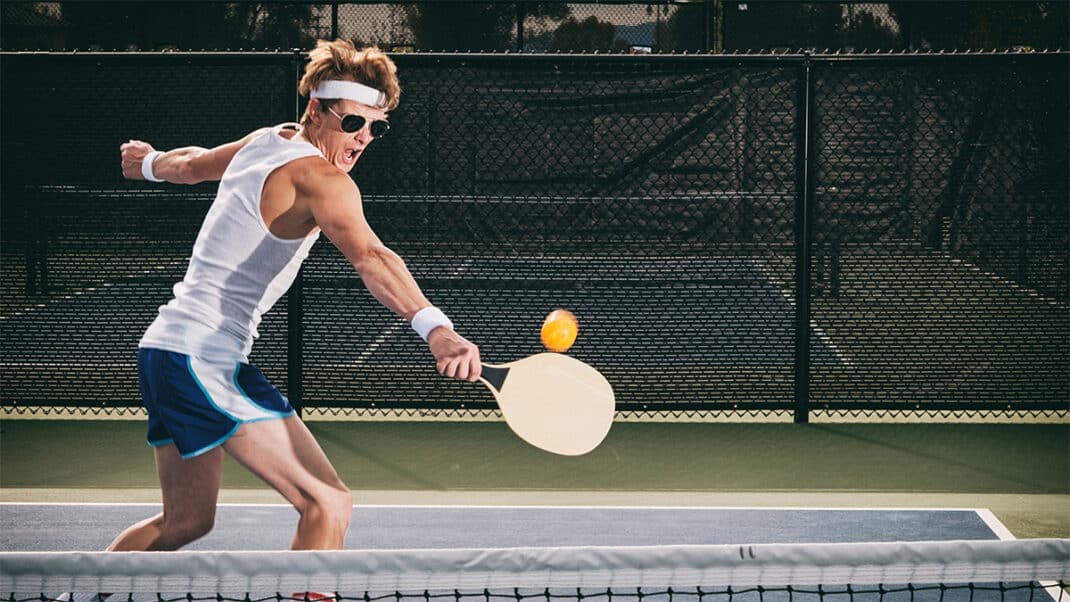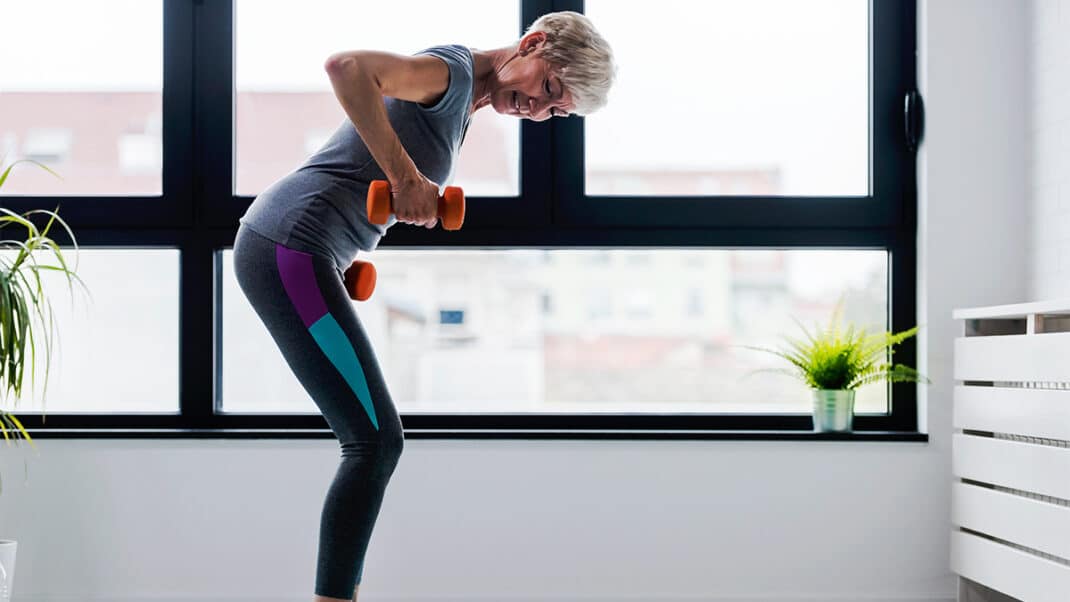The Shoulder, Part III
Studying the rotator cuff, and medial and lateral rotation.

The arm (upper limb) rotates medially and laterally about a vertical axis (through the long axis of the humerus). This motion is produced by contraction of the rotator muscles along with other muscles of the upper limb.
Arm rotation about its long axis can occur in any position of the shoulder because of its three axes and three degrees of freedom. Voluntary rotation can occur only in triaxial ball-and-socket-joints because of the three degrees of freedom. Movements are controlled and organized within these axes. If one axis is compromised by tight muscles, poor postural alignment of the joint or excessive use, movements can become difficult and, at times, impossible to execute.
Rotation of the humerus is usually described with the arm hanging vertically along the body as a reference point. To measure range of rotation, the elbow must be flexed to 90 degrees with the forearm in a sagittal plane. If range of rotation were measured with the arm extended at the elbow, pronation and supination of the forearm would also need to be considered.
In assigning muscular function, it is understood that the arm begins in anatomical position. Shoulder rotation does not account for the entire rotational potential of the upper limb. In addition to a 40 to 45 degree change in the direction of the scapula and glenoid as they move around the chest wall (discussed in “The Shoulder Girdle,” Part I of this series, IDEA Personal Trainer, October 2003, pp. 36-42), this change in direction produces a corresponding increase in the range of rotation.
The rhomboids and trapezius are involved in lateral rotation (adduction of the scapula), and serratus anterior and pectoralis minor are involved in medial rotation (abduction of the scapula). Simply put, the tendency to focus on individual muscles when discussing movements of the shoulder would leave an incomplete and misleading picture of the shoulder-arm complex. Since the joint is a multi-axial ball and socket, its ability to perform an infinite variety of motion is created by numerous muscles, tendons and ligaments providing stabilization for this joint to have such dynamic mobility.
The ability to maintain limb position while moving precisely (e.g., pouring a cup of tea) requires the stabilizing efforts of a multitude of tissues. The four rotator cuff muscles provide support for the shoulder; in turn, intricate motion can be executed by muscles that provide movement at the shoulder while others provide stabilization for maintaining joint position. Often overlooked in exercise program design is the “non-motion” that stabilizing musculature and intrinsic muscle tissue provide to allow movement.
Movement and Muscles
Lateral rotation is a motion up to 80 degrees with the elbow flexed at 90 degrees. During lateral rotation the anterior surface of the humerus turns away from the midsagittal plane or midline of the body.
Medial rotation is a motion of 100 to 110 degrees. This full range of motion (ROM) is created only when the forearm is behind the trunk and the shoulder is slightly extended. When the arm moves in front of the body, the first 90 degrees of medial rotation are associated with shoulder flexion. In medial rotation the anterior surface of the humerus turns toward the midsagittal plane.
The medial rotators of the arm (latissimus dorsi, teres major, subscapularis, fibers of anterior deltoid and pectoralis major) are significantly more powerful in both motion and natural stance when compared to the primary lateral rotators (infraspinatus, supraspinatus, teres minor and fibers of posterior deltoid). Rotation at the shoulder does not account for the entire range of upper limb rotation, however. The scapular movement potential of 40 to 45 degrees produces an increase in rotational ROM. (These muscles were discussed in “The Shoulder Girdle,” Fine Anatomy column, October 2003 IDEA Personal Trainer, pp. 36-42)
One of the four rotator cuff muscles—supraspinatus, the first “S” in the SITS group—does not truly provide lateral rotation. Supraspinatus is a significant abductor of the limb, specifically in initiating abduction from anatomical position. It provides stabilization during lateral rotation but has a much more important role in abduction. It assists in stabilizing the joint during lateral rotation, but does not truly rotate laterally. The middle fibers of the deltoid also assist in abduction of the humerus.
(“True” abduction and adduction of the humerus, and horizontal abduction and adduction will be discussed in this column’s fourth and final installment studying the shoulder.)
Although the rotator cuff muscles provide movement of the humerus, their main function is to reinforce the capsule of the glenohumeral joint. The capsule is reinforced with the tendons of the rotator cuff muscles.
Subscapularis originates from the anterior surface of the scapula (subscapularis fossa) and inserts on the lesser tubercle of the humerus. This is one of the rotator cuff muscles that reinforces the capsule of the glenohumeral joint. Subscapularis acts on medial rotation and adduction of the arm.
Supraspinatus originates from the supraspinous fossa on the posterior scapula. Its tendon passes under the acromioclavicular joint and the ligament, which
connects the coracoid process to the acromion. It inserts high on the greater tubercle. The supraspinatus acts to abduct and laterally rotate the arm. Although the deltoid is the primary abductor, supraspinatus can lift the arm into abduction even if the deltoid is paralyzed.
Supraspinatus is a vital rotator cuff muscle and the bursa of synovial fluid surrounding its tendon separates it from the inferior surface of the acromion and deltoid. If adhesions exist in this area, mobility of the shoulder can be restricted and the supraspinatus tendon compromised.
Infraspinatus originates from the infraspinous fossa and inserts on the greater tubercle at a point posteroinferior to the insertion of supraspinatus. It laterally rotates and abducts the arm.
Teres minor originates from the lateral border of the scapula (posterior surface) and inserts on the greater tubercle below the insertion of infraspinatus. Teres minor acts upon lateral rotation and adduction of the humerus.
Often called the SITS muscles, Supraspinatus, Infraspinatus, Teres minor and Subscpaularis surround the glenohumeral joint and reinforce it on three
sides. Their main function is to help keep the head of the humerus in the glenoid fossa during various movements—
specifically, during abduction.
The anteroinferior aspect of the joint is not reinforced by the rotator cuff, which makes this region of the shoulder somewhat loose, unstable and easily dislocated or strained. These muscles are somewhat deep and remain partially contracted most of the time to provide support of the arm even when the arm is “hanging at rest” alongside the body. Chronic contraction of the muscles in the cuff can lead to tendonitis.
In addition to teaching clients how to strengthen the rotator cuff muscles, coach them on relaxing these muscles; alternate between contraction and relaxation, and coordinating movements and contraction of shoulder muscles.
Many of the superficial muscles (such as latissimus dorsi) also can significantly influence the rotator cuff if it becomes chronically shortened.

The rotator cuff muscles are not balanced in their ability to internally or externally rotate the humerus. The external rotators, which are significantly weaker than the internal, should be exercised through range of motion (ROM).
However, some of the exercises listed are specifically designed to encourage the stabilizing mechanics of the rotator cuff in its entirety. Rotation can be exercised in the open chain as a movement and the closed chain as a stabilizing component.
There are many products specifically designed to enhance the neurological components of this region of the shoulder. The design of your programs will largely depend on your training environment, your client’s current ability and movement potential, and your accessibility to specialized products. The most basic and practical exercises are described here, but there are many others. General muscle testing for weakness should be done before designing the client’s program.
Fully understanding the shoulder’s firing patterns and optimal ROM will also help you create an effective program. Ideally, a functioning human body should be able to:
- move the scapula independently of the arm and vice-versa
- move the neck independently of the shoulder girdle and vice-versa
- differentiate one joint from another when creating movements involving the entire shoulder girdle, neck or both.
1. Standing External Rotation
- Client begins with right arm hanging and relaxed at her side, elbow bent into 90-degree angle.
- Cue and assist her to maintain good shoulder girdle position, relaxed but with collar bones “wide” and shoulder blades “heavy.”
- Place one end of a resistant band in her right hand and secure the other side by tying it to a sturdy pole. The band should be in front of her chest, about waist high.
- Place a towel under her elbow to main- tain a proper angle at the shoulder joint.
- Client externally rotates her arm from 0 degrees (anatomical position) to as far externally as possible (up to 80 degrees without excess compensatory movement from the entire girdle).
- Hold at end range and slowly return to beginning position.
- Repeat 8 to 12 times, alternating right and left arm.
- Make client aware of imbalances.
- To make the movement easier, client should stand closer to the band’s stationary point.
- To increase resistance, client should stand farther away from the band’s stationary point.
- This exercise can also be performed on a cable machine.
2. Standing Internal Rotation
- Use same set-up as in previous exercise.
- Place one end of a resistant band in client’s right hand and secure the other side by tying it to a sturdy pole. The band should be at her right side.
- Cue her to internally rotate her arm from 0 degrees to as far internally as possible without moving the entire shoudler girdle.
- Hold at end range and slowly return to beginning position.
- Repeat 8 to 12 times with each arm.
- To make the movement easier, client should stand closer to the band’s stationary point.
- To increase resistance, client should stand farther away from the band’s stationary point.
- This exercise can also be performed on a cable machine.
Exercises Using a Stability Ball
Stability Ball Presses (Push-up Position)
Progressions
- Add movements—such as a basic push-up on the ball—which not only challenge the rotator cuff as a stabilizer but also challenge the chest, shoulder, triceps and back.
- Increase difficulty by gently bumping the ball for greater instability and increased reflex demand.
- Have client try lifting one leg off the ground as she holds her body at 45 degrees.
Exercises Using Weights
1. Prone Shoulder External Rotation at 90 Degrees
- Client lies face down on a massage table and begins with the exercising arm dangling off of the edge, from the elbow joint, weight in hand. Upper arm (humerus) should be on the table.
- Place a rolled-up towel under the anterior portion of the shoulder to take any unnecessary strain off of the clavicular head of the pectoralis muscles.
- Client may turn her head toward the exercising arm for a more comfort- able and relaxed neck position. (If a face cradle is available, client can rest head in a neutral position.)
- Cue her to externally rotate the humerus at the shoulder joint until the knuckles of the exercising arm are angled at approximately 80 degrees, or as level with the head as possible.
- Slowly return to start position.
- Cue client to exhale as she moves her arm, and inhale at end ranges.
- Reinforce slow, controlled movements and watch for compensatory action at the shoulder girdle.
- Perform 8 to 10 times; repeat on opposite side.
2. Prone Shoulder Internal Rotation at 90 Degrees
- The set-up is the same as in the previous exercise, but with movement
- in the opposite direction (internal rotation up as far as the client can move the arm without compensatory action or increased range from the muscles that provide scapular motion).
- Slowly return to beginning position.
- Cue client to exhale as she moves her arm, and inhale at end ranges.
- Reinforce slow, controlled movements and watch for compensatory action at the shoulder girdle.
- Perform 8 to 10 times; repeat on opposite side.
Note: The previous two exercises can be combined into a single full-range movement (from full external to full internal rotation).
Sue Hitzmann, MS
Sue Hitzmann, MS, is the creator of the MELT Method®, nationally recognized educator, manual therapist and founding member of the Fascia Research Society. She is a presenter for IDEA, ECA and PMA, and a CEU provider for ACE, AFAA, NASM, PMA and NCBTMB. She has trained instructors from over 20 countries and is the author of the New York Times bestseller The MELT Method, which has been translated into eight languages, as well as the recent book, MELT Performance.






